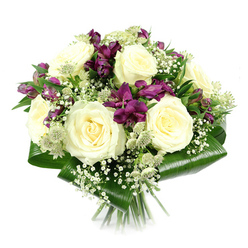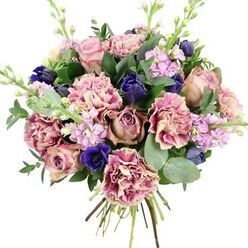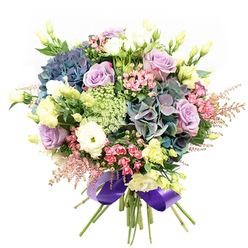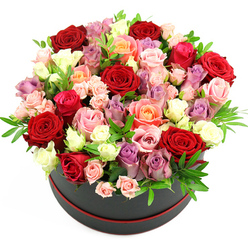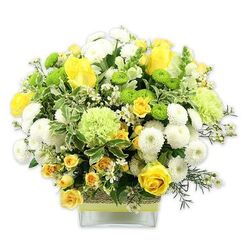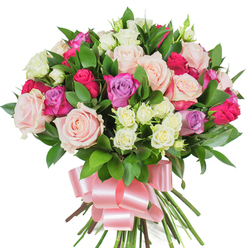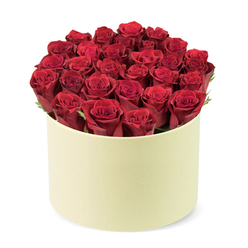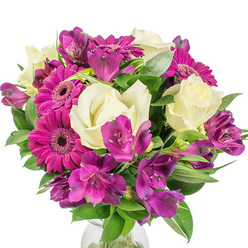Hampstead Garden Suburb Flowers: Florist-Approved Care Tips
Welcome to Our Hampstead Garden Suburb Flower Care Guide
The joy of receiving a stunning bouquet or decorating your home, workplace, or special event with fresh flowers from Hampstead Garden Suburb is unparalleled. But to ensure your blooms remain beautiful for as long as possible, it’s essential to follow expert flower care advice. Our experienced local florists, serving homes, weddings, and businesses in Hampstead Garden Suburb, have compiled top tips to help you get the most from your arrangements. Whether you’re nurturing a hand-tied bouquet or a grand centerpiece, these insights will keep your flowers vibrant and fresh.
General Flower Care Essentials from Hampstead Garden Suburb Florists
Caring for Flowers Hampstead Garden Suburb is about more than just placing them in water. Our florists have found that little details make a big difference:
- Use Clean Vessels: Always start with a thoroughly washed vase to prevent bacterial growth, which can cause wilting.
- Fresh Water Matters: Add fresh lukewarm water to your vase and change it every two days. Clean water is vital to prolonging vase life.
- Trim the Stems: Cut 2cm from the base of each stem at a 45-degree angle before arranging them. This increases water absorption.
- Remove Foliage Below Waterline: Leaves submerged in water rot quickly, shortening your flowers’ vase life. Strip any foliage that would sit below the waterline.
- Positioning is Key: Keep arrangements away from direct sunlight, radiators, and fruit bowls (ripening fruit releases ethylene gas that can age flowers).
Expert Tips for Specific Types of Hampstead Garden Suburb Flowers
Our Hampstead Garden Suburb florists often work with a variety of popular flowers. Each type can have special requirements:
- Roses: Remove guard petals to reveal the freshest blooms. Re-trim stems every three days and refresh the water regularly.
- Lilies: Remove pollen with a tissue as soon as the lilies open to avoid staining and to help them last longer.
- Hydrangeas: These thirsty flowers do best with deep water. If they wilt, immerse the entire flower head and stem in water for a few hours to revive them.
- Tulips: Place in cool water and keep away from heat sources. Tulips continue to grow after cutting and may bend; rotating the vase daily helps keep stems straight.
Seasonal Flower Care in Hampstead Garden Suburb
Flowers are at their best when they’re seasonal. Below are local expert tips, tailored for each time of year:
Spring
Bring vibrant bulbs and blossoming branches indoors. Mix narcissi, hyacinths, and ranunculus for fresh, fragrant displays. Spring flowers can be sensitive to stem blockages, so re-trim frequently and use flower food for a nutrient boost.
Summer
Hydration is even more crucial in warmer months. Keep vases topped with fresh water and place arrangements in cool, shaded areas. Flowers like peonies, sunflowers, and garden roses benefit from more frequent water changes in the heat.
Autumn
Echo the rich tones of the season with dahlias, chrysanthemums, and asters. These robust blooms appreciate clean water and a slightly cooler environment to maximise longevity. Remove faded blooms promptly to keep the whole arrangement looking fresh.
Winter
Consider incorporating evergreens, berries, and seasonal blooms such as amaryllis. During colder months, flowers tend to last longer; still, avoid placing them near heaters or fireplaces to prevent premature drying.
Vase Life Hacks from Hampstead Garden Suburb Florists
Our florists often share insider tricks to ensure arrangements stay at their peak. Here are a few lesser-known tips used in our Hampstead Garden Suburb flower workshops and events:
- Sugar and Vinegar: If you’re out of florist-provided food, a teaspoon of sugar (for nourishment) and a drop of vinegar (to control bacteria) in the water can help.
- Aspirin Magic: Some florists swear by adding a crushed aspirin to the vase, which can help keep water clearer and prolong flower life.
- Mist Your Flowers: A gentle misting every morning is especially helpful for delicate flowers and arrangements in low humidity environments.
- Remove Spent Blooms: Deadheading not only tidies up your display – it redirects energy to the remaining healthy flowers.
Flower Care Mistakes to Avoid
The most common mistakes observed by our florists serving Hampstead Garden Suburb are simple but easy to avoid:
- Leaving stems untrimmed after arrival, which causes blockages and restricts water uptake.
- Neglecting to remove decaying foliage from the water, inviting bacteria.
- Forgetting to change the vase water regularly, which can halve the lifespan of your flowers.
- Placing arrangements in excessively warm or drafty areas, accelerating wilting.
Your blooms from Hampstead Garden Suburb deserve the best – with a little daily care, their beauty can be enjoyed for much longer.
Care for Flowers in Weddings and Business Settings
Florists serving weddings and corporate clients around Hampstead Garden Suburb know how vital freshness is on the big day or at important events. Here are some specialised tips for these occasions:
- Transport with Care: Keep arrangements cool and hydrated during transport.
- Use Professional Floral Foam: For event displays, ensure the foam is soaked thoroughly and rehydrated as needed.
- Staggered Installation: Arrange for flowers to arrive shortly before the event to ensure maximum freshness on display.
Trusted Local Expertise: Why Choose Hampstead Garden Suburb Florists
Our florists pride themselves on their passion, skill, and understanding of local needs. Serving households, weddings, and businesses in Hampstead Garden Suburb, our florist team ensures every arrangement receives the utmost care and attention – and so can you, with these tips.
Whether you’ve received spring tulips for your kitchen, a summer bride’s bouquet, or a bold winter centerpiece for your office, following professional advice keeps your Hampstead Garden Suburb flowers at their best. For every season and every occasion, trust these local tips to maximise beauty and freshness in every stem.




